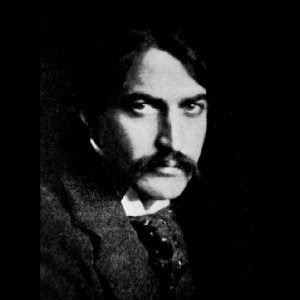Francesca Cricchio
English 48B
February 9th, 2011
“This tower was a giant, standing with its back to the plight of the ants. It represented in a degree, to the correspondent, the serenity of nature, amid the struggles of the individual-nature in the wind, and nature in the vision of men. She did not seem cruel to him them, nor beneficent, nor treacherous, nor wise” (1013).
“Crane was himself a dashing figure, whose life was often as much of a story as anything that came from his pen.” (Biography of crane from Pearson Literature)
The story begins with four men stranded at sea. Crane depicts this unkindly event by writing, “ None of them knew the color of the sky. Their eyes glanced level, and were fastened upon the waves that swept toward them” (Crane, 1000). Automatically the men are painted into a horrifying picture and their situation only gets worse over time. Stuck in a boat that was “not unlike a seat upon a bucking bronco” (1001) and “not much smaller”, the men take turns paddling away at the wild sea. An argument occurs between the gentlemen regarding a refuge on land that may or may not contain food and warm shelter. The men leave the result up to fate and paddle until they see the lighthouse that they think will save them. Their optimism is quickly shot down when they come closer to land, and find that there is nobody there to save them. They tirelessly turn the dingy back around and head back into the turbulent surf. As nightfall becomes close, the men see another grey shore in the distant, and this time there is somebody on land waving towards them. “Look! There’s a man on the shore!” (1007) writes Crane. The four men try to contemplate what it exactly is the figure is doing. The mens weariness quickly disappears again and their life's fate is renewed! But once again they are let down when the sun sets and nobody comes to rescue them.The men use the little energy they have left to paddle through the night, and when dawn reaches the tiny dingy in the middle of the vast sea the men decide to swim to shore with the crashing waves in sight. All four swim as hard as they possibly can, and reach shore at last. A stranger helps pull them in, but unfortunately the oiler has died on the swim in.
This story brought about a lot of grief, mainly because the situation the men were in was one that is uncontrollable. The type of writing Crane uses can be described as naturalistic because his story portrays “humans as helpless of nearly helpless victims of natural and social forces” (a quote describing Naturalism Mark Canada’s website). The battle the men face at sea is one that is against nature, and their struggle to survive pushes them to their breaking point. Their minds are constantly toyed with because in almost all situations, sailors who become shipwrecked don’t usually survive, so naturally the men in this story were struggling to maintain their composure in such a life-threatening moment. Just like realism which creates characters that are believable and in honest situations, naturalism also focuses on the thoughts of the characters. Crane did exactly this with all four men in the open boat. He writes, “He thought: ‘I am going to drown? Can it be possible? Can it be possible? Can it be possible?’ Perhaps an individual must consider his own death to be the final phenomenon of nature” (1015). It’s simple lines like these that are found throughout the entire story that are what make this event so real and honest. The simple question of asking if one is going to survive is enough to make us understand. At some point in our life we’ve all felt a moment of insecurity...of worry...of fear. Crane does an excellent job of displaying not only every emotion of the men, but also every thought of the men, so that we the readers can grasp all that is really happening, and find the story believable and true to the core.
Crane also repeats the same line several times to emphasize the importance of man reaching his breaking point. “If I am going to be drowned- if I am going to be drowned- if I am going to be drowned, why, in the name of the seven mad gods who rule the sea, was I allowed to come thus far and contemplate sand and trees?” (1011). This goes back to Crane’s style of naturalistic writing. It is the environmental factors that shape the character in naturalistic writing. By putting the men in dire situations that fight mother nature, we can determine a person’s character. The quote above is used by all the men to describe the helplessness they’ve encountered. But, the men also still have a small amount of hope instilled in them when they say “why, in the name of the seven mad gods who rule the sea, was I allowed to come thus far”. Anyone who has given up would not waste their energy questioning the reason behind why they were where they were...they would simply give up. But because the men still wondered, it was enough to show that they still had a small amount of hope-even if they didn’t realize it.
Using naturalism and sharing everything that is thought, heard, and said, we as the readers can completely understand the realism behind these indelicate situations. I think that part of the reason why Crane was such a praised and successful writer was because books like “The Red Badge of Courage”, “Maggie”, and “The Open Boat” are honest, and real. And what’s better than reading a book that makes you feel like you are right there with the character?


20 points
ReplyDelete